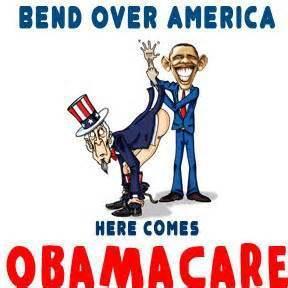
Yahoo: Rocky Rush, a 37-year-old single father from Nebraska, has gone without health insurance for years due to the cost, and the Affordable Care Act hasn’t changed that. “I can go without medical coverage, but my children need it,” Rush says.
Affordable health insurance for all Americans was one of the cornerstones and selling points of the ACA. And while the law has helped reduce the proportion of uninsured Americans from 20 to 15 percent, according to The Commonwealth Fund, it has left millions without coverage.
These uninsured Americans, falling into a gap created by the ACA, are too poor to receive assistance on their health insurance premiums, but make too much to qualify for Medicaid, putting them in a difficult predicament when costly medical bills come due.
When Rush last shopped for coverage — while working full time at a local events center that didn’t offer benefits he could afford — he says he didn’t qualify for subsidies under the ACA. But because Nebraska didn’t expand Medicaid, he didn’t qualify for that either.
“Both of my kids are on Medicaid,” says Rush, who has a daughter, 5, and a son, 3. Rush lost that job and briefly had access to Medicaid, but once his unemployment benefits kicked in, he made too much money and again had to go without coverage.
Court Ruling Creates Gap
In 2012, the Supreme Court determined Medicaid expansion as written in the ACA couldn’t be forced on states. Each state can decide whether to expand coverage. Twenty-seven states and the District of Columbia have expanded Medicaid, 21 have not and two are debating the issue.
“The way that the law was originally intended was that there would be a continuum of coverage for people across the income spectrum,” says Rachel Garfield, senior researcher for the Kaiser Family Foundation and associate director for the Kaiser Commission on Medicaid and the Uninsured. The poorest Americans would be eligible for Medicaid; those in the middle would get their coverage through an employer or the ACA marketplace; and those with the highest incomes could purchase their insurance where they saw fit.
With the Supreme Court’s ruling, this continuum was interrupted. “Because the intention was that there would be this continuum, the way the law was written was so that those at the lowest income levels are not eligible for tax credits to purchase coverage in the marketplace,” Garfield explains. “So, if they’re in a state that doesn’t expand Medicaid, they are left with no financial assistance for coverage under the ACA.”
This tear in the continuum created a gap — one that Rush fell into.
“I really couldn’t find anything under $140 per month, the last time I looked, and as a single father raising two small children on a limited income, even that was something I felt like I couldn’t afford,” Rush says. He estimates he would need to bring in $40,000 to comfortably afford health insurance. But at that level, he’s worried his children wouldn’t be eligible for Medicaid.
The Kaiser Family Foundation estimates the average bronze Marketplace plan to cost $224 a month in 2014. This may not seem like much for many Americans, but represents 25 to 50 percent of the monthly income of people who fall into the gap.
“We estimate about 4 million people fall into this situation,” Garfield says. “[These people] would have been eligible for Medicaid had their state been expanded, but are not eligible for anything because their state decided not to.”
Who are these people? By definition, they are the poor, with incomes between 50 and 100 percent of the federal poverty level. But that’s not the only characteristic worth pointing out, Garfield says. Most of them are adults without children, 86 percent live in the South, over half are middle-aged or older and minorities are disproportionately represented. Also, they work.
“Two-thirds of the people who fall into the gap are in a working family,” Garfield says. “They are just working in jobs that don’t offer affordable health insurance coverage.”
Where to Turn if You’re Uninsured
So where do you turn if you’re one of the millions who have been shut out of some of the benefits that make health insurance affordable under the ACA? “Whether or not you have insurance, you’re likely to have a health need,” Garfield says. In other words, your health won’t take a back seat just because you don’t have coverage.
Garfield recommends the uninsured look into Medicaid even if their state didn’t expand, explaining there are some pathways in those states that could make some people eligible.
Rush has found a temporary solution, returning to school full time and working part time in a federal work-study program. Medicaid may finally be available. He has submitted income evaluations to the state and is awaiting a response.
Garfield further suggests uninsured folks explore the options available in their community, using local clinics and other resources designed to help people who can’t afford medical care.

DCG

